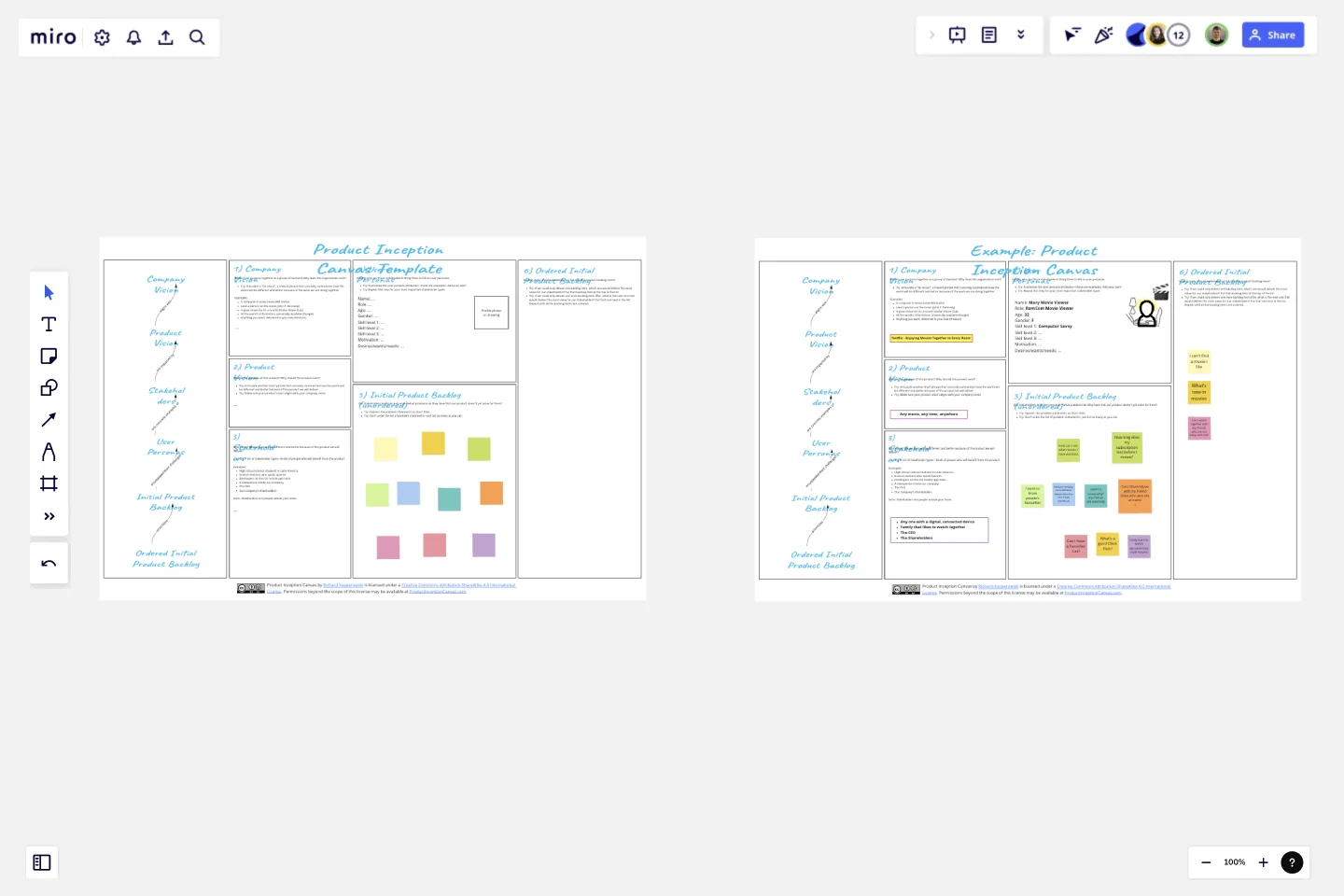Product Inception Canvas
Want an easy tool to help you start building great products that people love?
That’s exactly what the Product Inception Canvas is: a practical worksheet to help you, your business people, your stakeholders, and everyone else on your team discover exactly what to do next as you build and extend your product.
The Product Inception Canvas facilitates alignment among business people, product development teams, and stakeholders. We begin by identifying, discussing, and aligning on our company vision and product vision: Who are we? Why do we exist? How will the world be different and better because of the work we are doing? Next, we identify stakeholders and bring them to life as user personas: Who cares about the work we are doing? Who are they, really, including all their details? Finally, we put it all together into a product backlog—an ordered to-do list of everything we want to be true about our product in the future: What are the wants and needs of our stakeholders? What problems will we solve for them? Which problems should we solve first to maximize their joy?
This template was created by Richard Kasperowski.
Get started with this template right now.
Product Management - Product Flow
Works best for:
Product Management, Planning
Product Management - Product Flow template enables product managers to visualize and streamline product development processes. By mapping out key stages, tasks, and dependencies, this template enhances workflow transparency and coordination. With features for identifying bottlenecks and optimizing resource allocation, it empowers teams to improve efficiency and accelerate product delivery. This template serves as a valuable tool for ensuring smooth product development and launch processes, ultimately driving better outcomes.
AI Product Canvas
Works best for:
Product Management, Planning
The AI Product Canvas template facilitates the development of AI-powered products with a comprehensive framework. By defining AI capabilities, data requirements, and ethical considerations, this template guides teams through the AI product development process. With sections for identifying use cases, defining algorithms, and assessing model performance, it ensures that AI solutions meet user needs and ethical standards. This template serves as a strategic guide for developing innovative AI products that deliver value and drive business success.
Research Topic Brainstorm Template
Works best for:
Desk Research, Brainstorming, Ideation
Coming up with a topic for a research project can be a daunting task. Use the Research Topic Brainstorm template to take a general idea and transform it into something concrete. With the Research Topic Brainstorm template, you can compile a list of general ideas that interest you and then break them into component parts. You can then turn those parts into questions that might be the focus for a research project.
UML Use Case Online Shopping System Template
Works best for:
UML
The Online Shopping System Template simplifies the process of documenting and visualizing how users interact with an online shopping system. It provides a standard way to map out user interactions, such as product listings, inventory management, shopping carts, order processing, payments, and shipping details. By using this template, teams can collaborate effectively in real-time or at different times, adjusting the diagram to meet their project's specific needs. This not only improves clarity and efficiency but also fosters better communication among team members and stakeholders, ensuring a thorough understanding of the system's design and requirements.
The Tiered Pricing Canvas - Product Plans
Works best for:
Product Management, Planning
The Tiered Pricing Canvas - Product Plans template helps product managers design tiered pricing strategies effectively. By mapping out pricing tiers, features, and value propositions, this template enables teams to optimize pricing models and maximize revenue. With sections for analyzing customer segments and competitive pricing, it supports data-driven pricing decisions. This template serves as a guide for crafting compelling pricing plans that align with customer needs and market dynamics, driving profitability and customer satisfaction.
Cone Roadmap
Works best for:
Roadmap, Planning, Mapping
The Cone Roadmap template offers a visual representation of project timelines and dependencies, with a focus on narrowing scope over time. By starting with broad initiatives and gradually refining them into actionable tasks, teams can manage complexity and ensure alignment with strategic goals. This template promotes transparency and adaptability, empowering teams to respond effectively to changing priorities and market dynamics.
